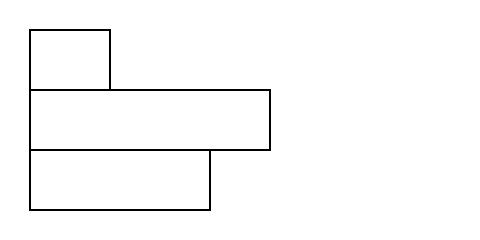翻訳済み
このページは日本語に翻訳済みです。
stack要素関数要素関数要素関数はsetルールやshowルールでカスタマイズできます。
要素関数
要素関数は
setルールやshowルールでカスタマイズできます。コンテンツと間隔を垂直または水平方向に配置。
スタックは、ある軸に沿ってアイテムのリストを配置し、各アイテム間に任意の間隔を設定します。
例
#stack(
dir: ttb,
rect(width: 40pt),
rect(width: 120pt),
rect(width: 90pt),
)

引数引数引数は関数への入力値です。関数名の後に括弧で囲んで指定します。
引数
引数は関数への入力値です。関数名の後に括弧で囲んで指定します。
stack(dir:,,)->dir設定可能引数設定可能引数設定可能引数は、setルールを用いて設定でき、それ以降で使用するデフォルト値を変更できます。
dir設定可能引数
設定可能引数
設定可能引数は、
setルールを用いて設定でき、それ以降で使用するデフォルト値を変更できます。アイテムを積み重ねる向き。可能な値は以下の通りです。
ltr: 左から右。rtl: 右から左。ttb: 上から下。btt: 下から上。
alignmentと同様に、向きの始点と終点を(それぞれ)取得するために、startとendメソッドを使用できます。
向きが"horizontal"か"vertical"のどちらに属するかを決定するためにaxisメソッドも使用できます。
invメソッドは逆の向きを返します。
例えば、ttb.start()はtop、ttb.end()はbottom、ttb.axis()は"vertical"となり、ttb.inv()はbttに等しくなります。
デフォルト値:ttb
明示的に間隔が与えられなかった場合にアイテム間に挿入される間隔。
デフォルト値:none